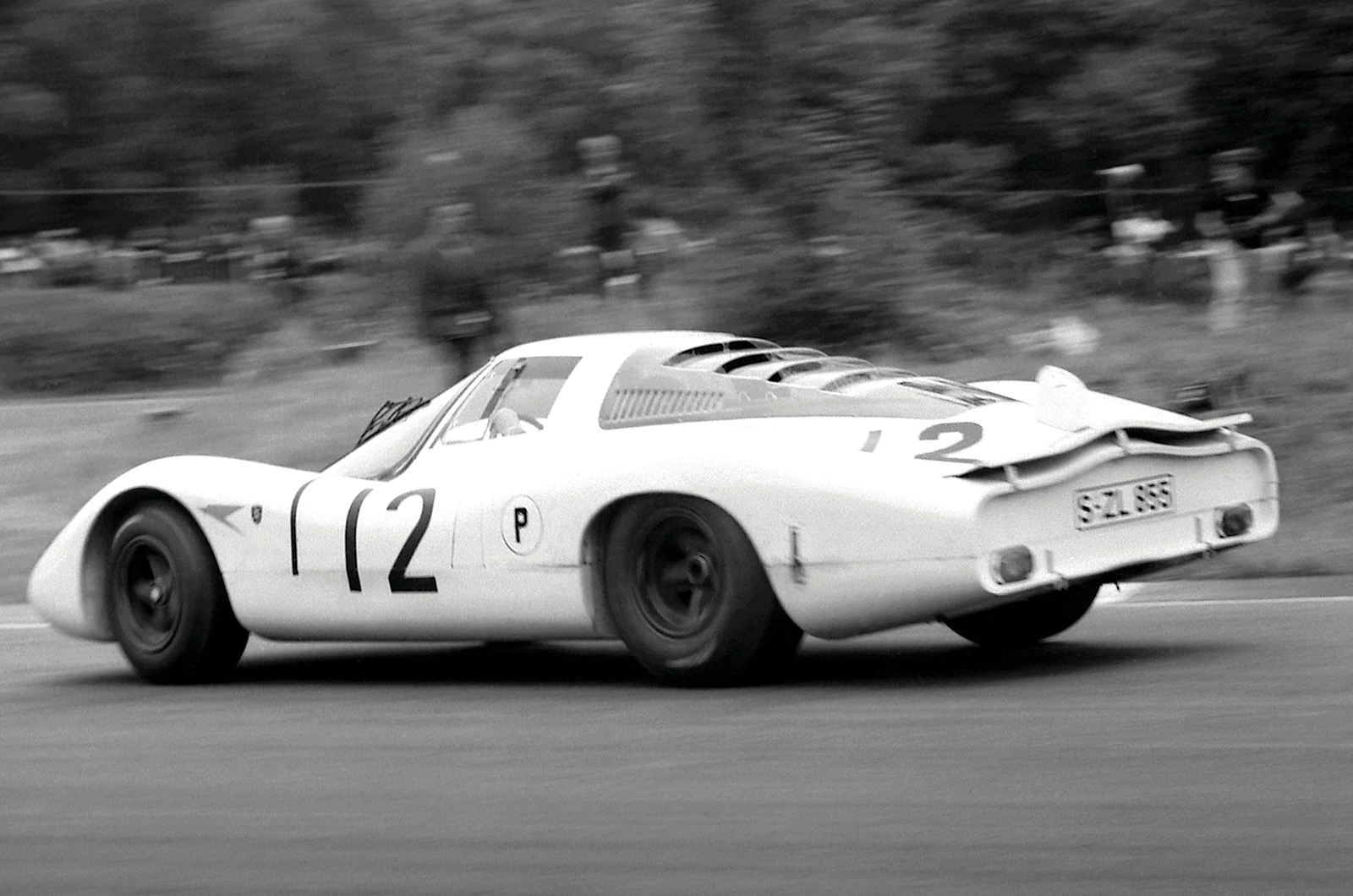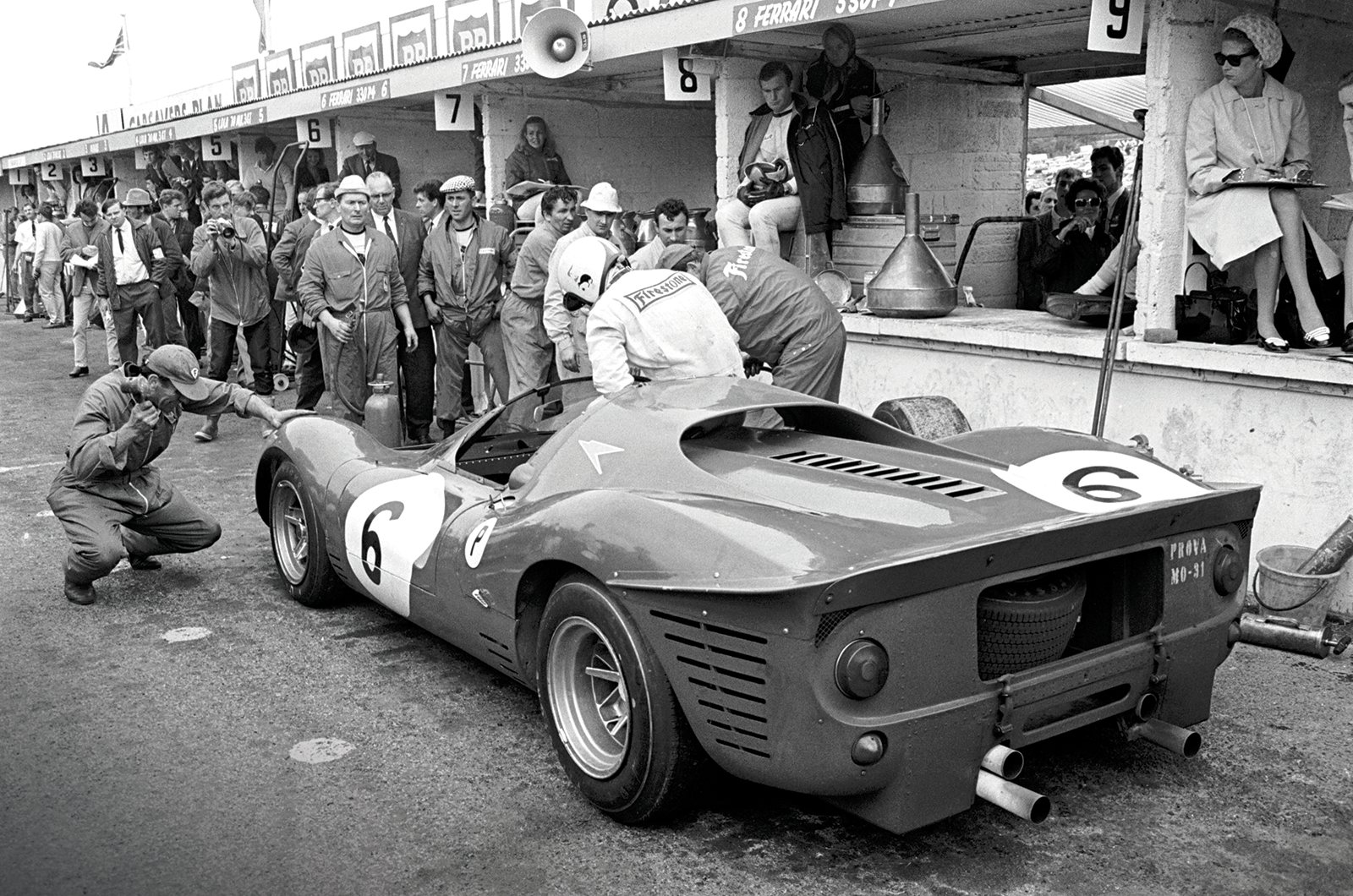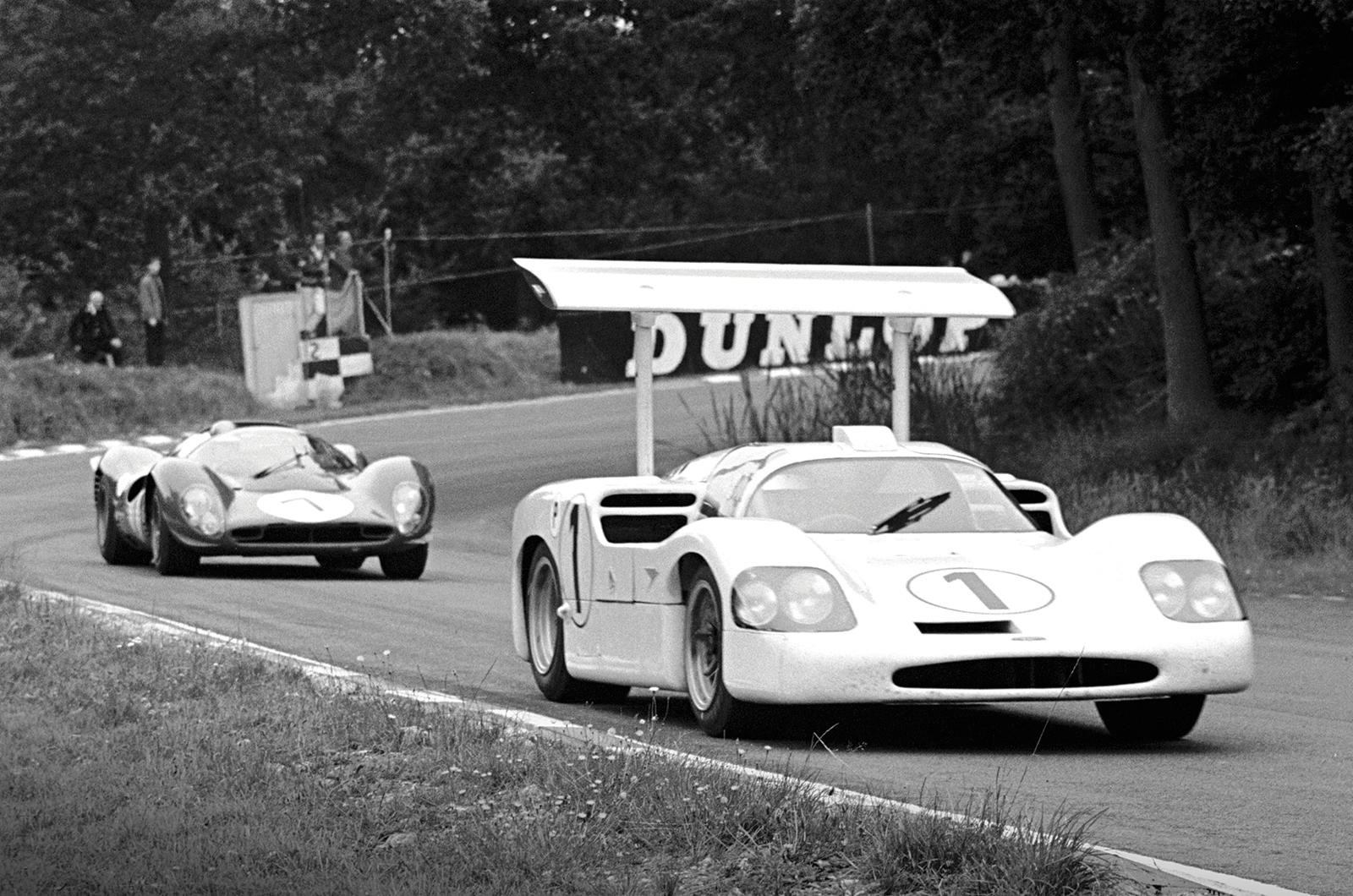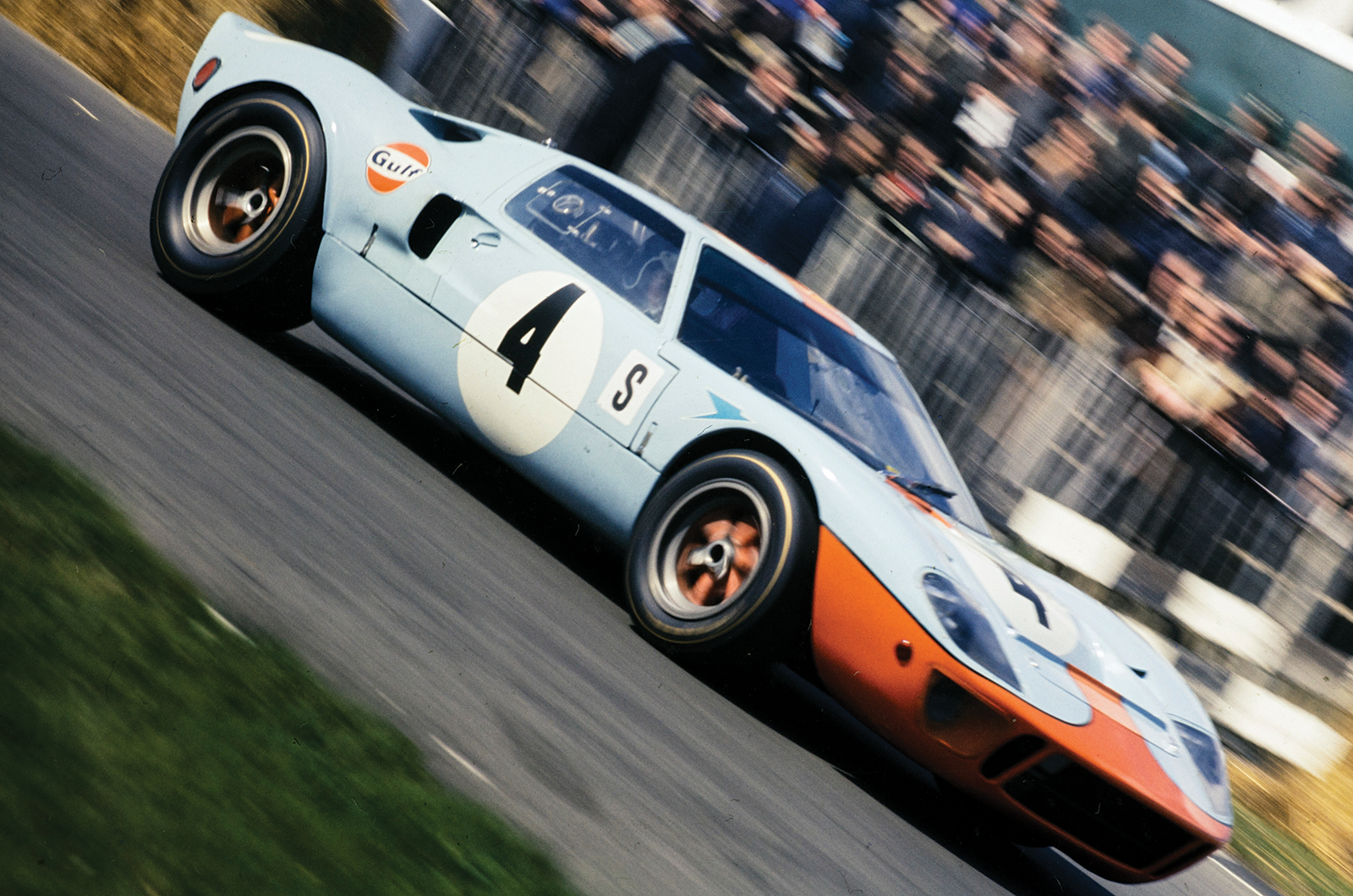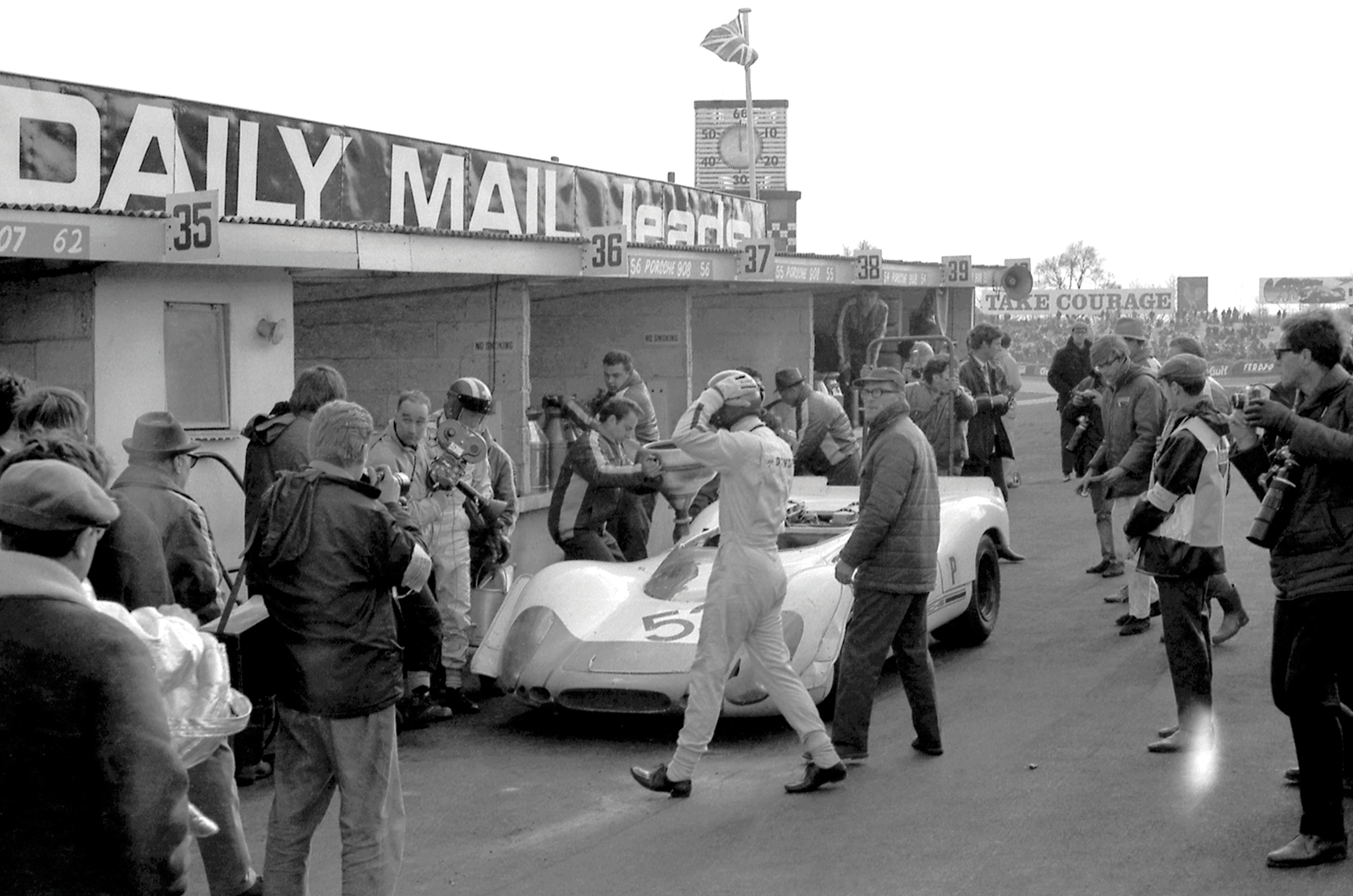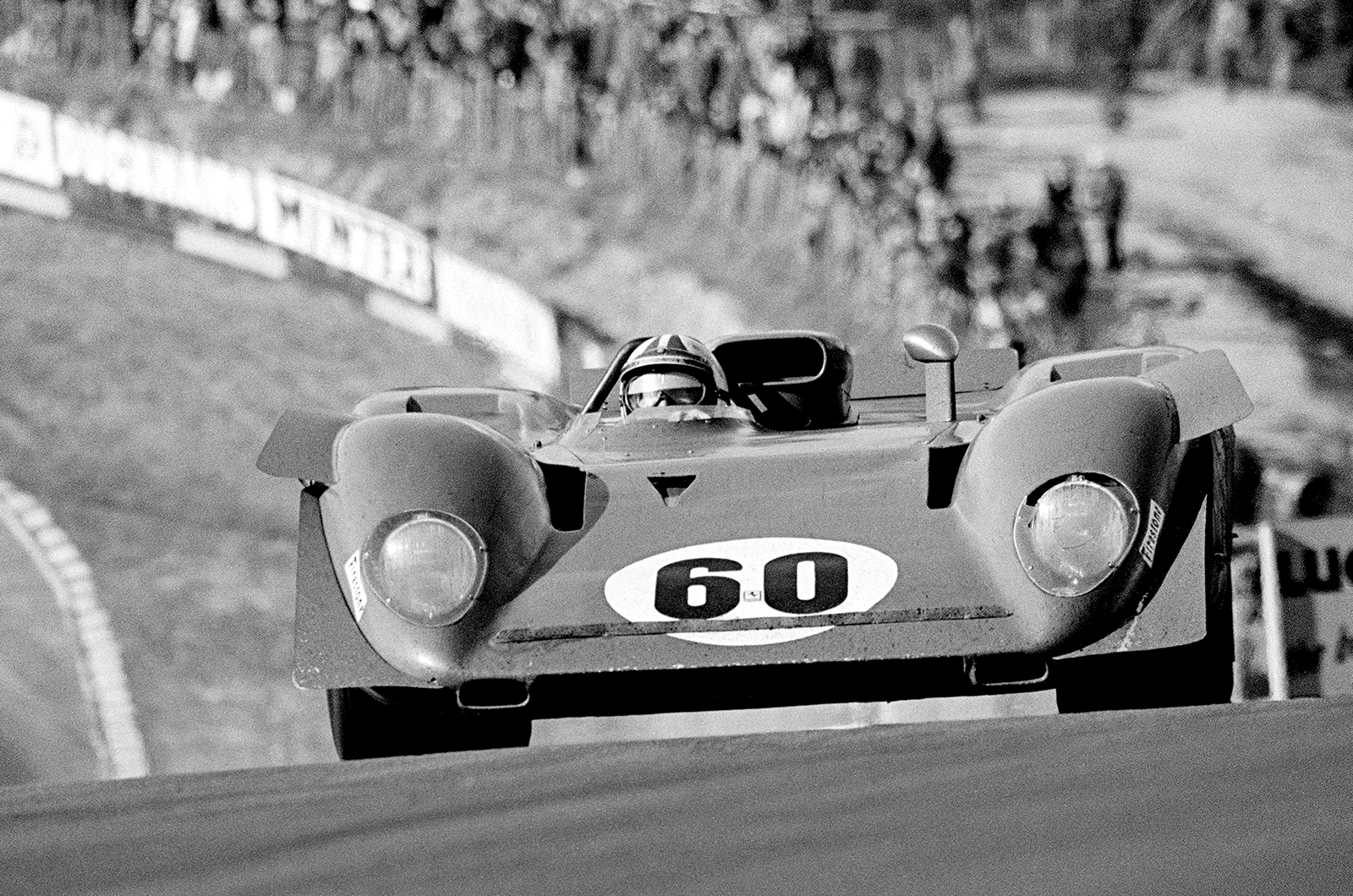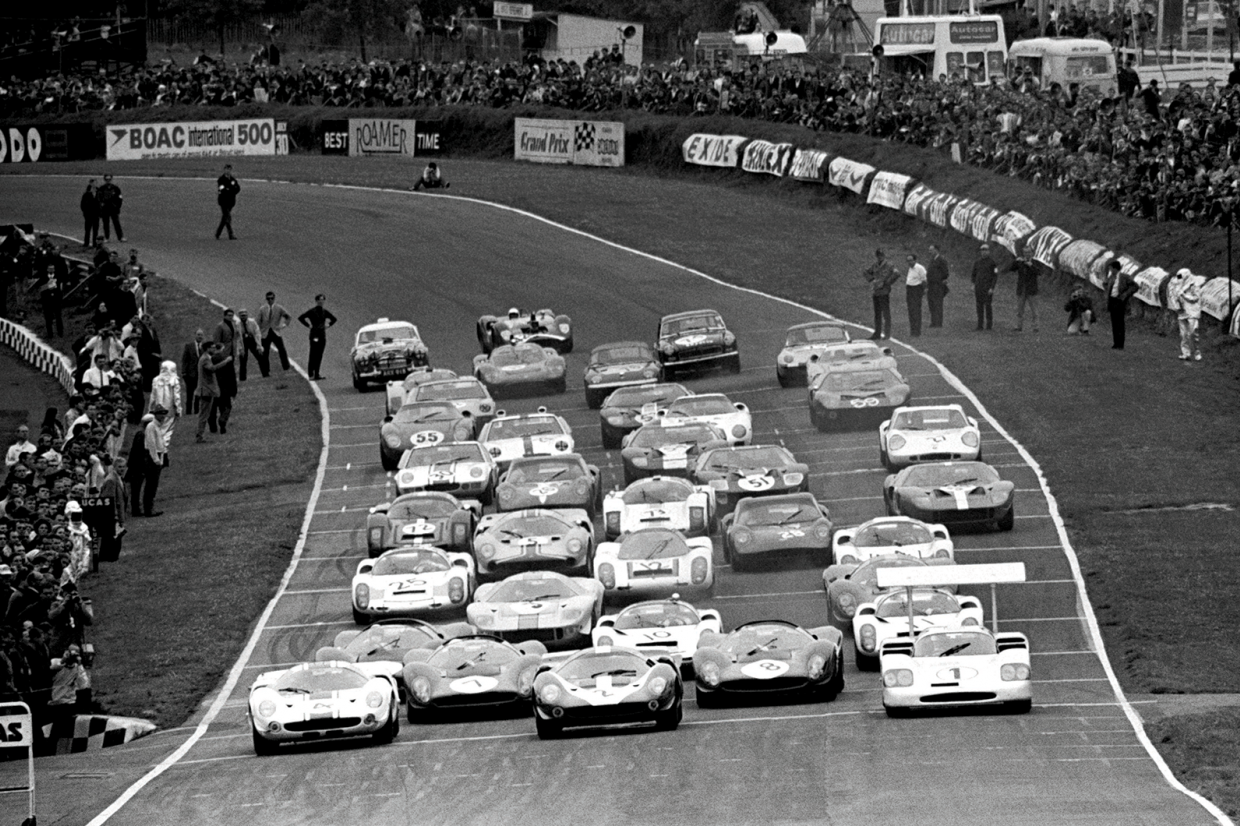
For British fans in the late 1960s, the easiest and best way to witness the golden era of the World Sportscar Championship was with a pilgrimage to Brands Hatch at varying times of the year.
For when the new BOAC International ‘500’ concluded the season bizarrely early in the summer of 1967, it returned top-line endurance racing to Britain for the first time in years.
‘I am certain,’ wrote British Overseas Airways Corporation chairman Sir Giles Guthrie in his programme notes, ‘that the BOAC “500” will immediately take its place in popularity with Le Mans, the Targa Florio, the Nürburgring and the other classics which make up this championship series.’
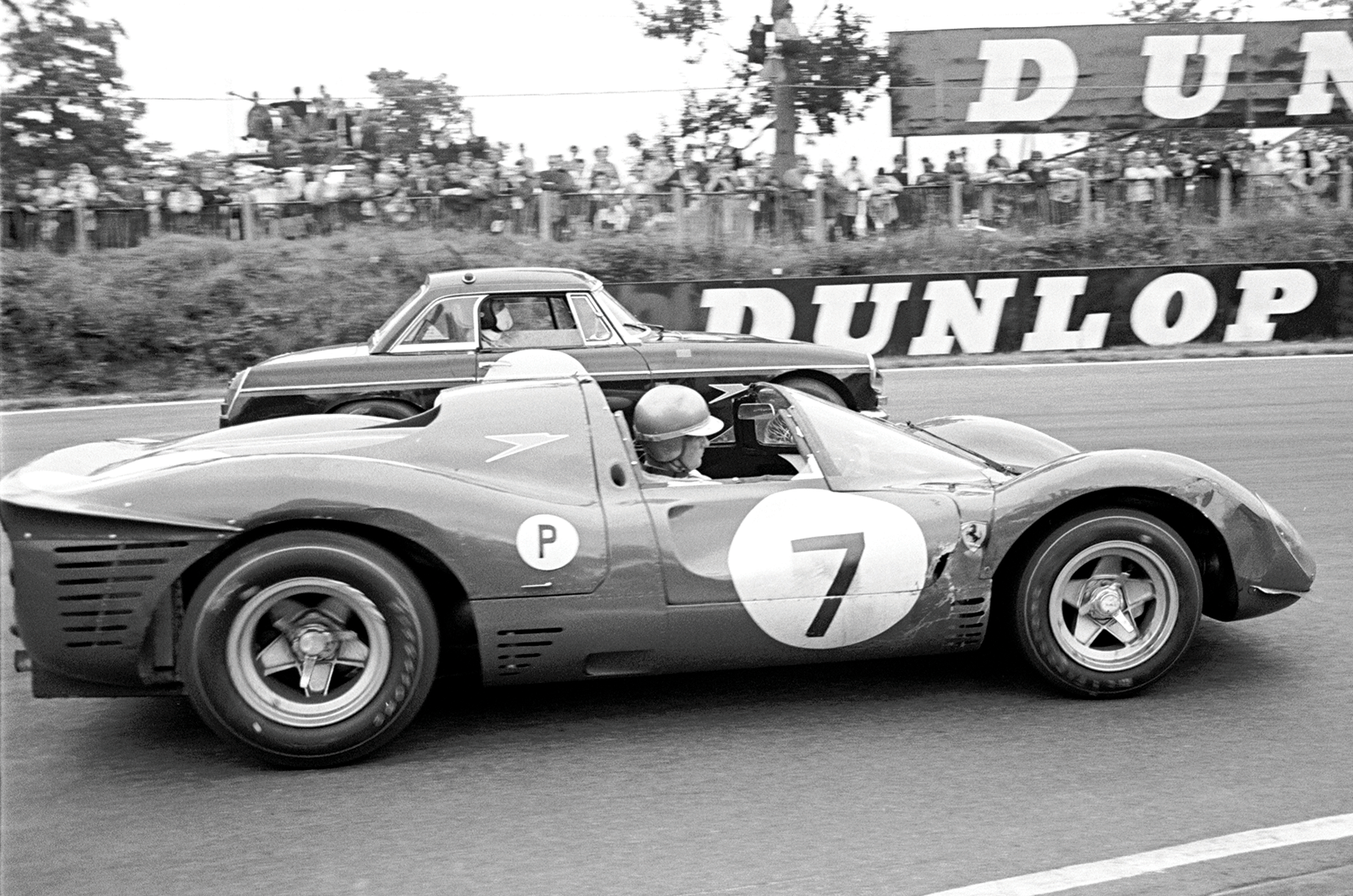
Peter Sutcliffe’s Ferrari P4 dives inside an MGB at Druids bend
Former air racer Guthrie had spent the five paragraphs leading up to that rather hopeful conclusion by trying to explain the connection between the BOAC and motorsport, only to effectively land on the illuminating idea that racing drivers travel a lot.
There was form, though, because Ford had made sure the world knew it flew the GT40 to the United States with BOAC for a New York Auto Show preview night on its launch in 1964.

